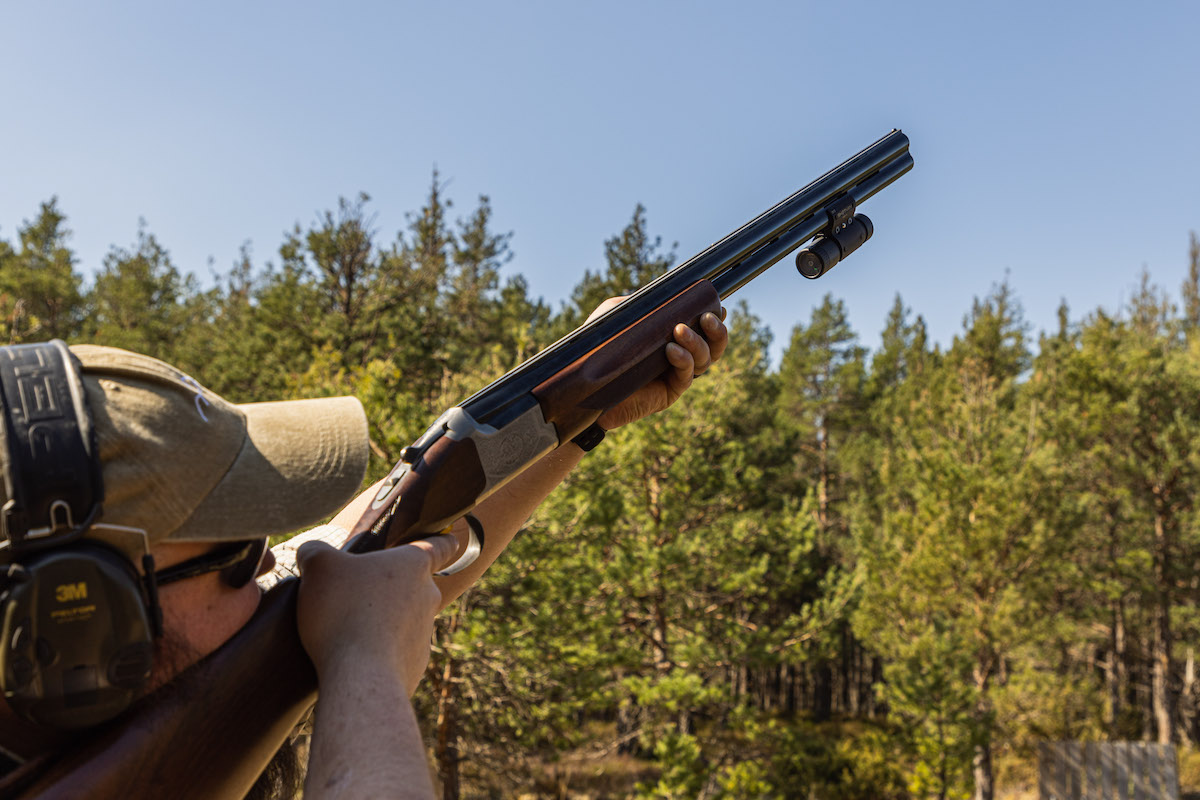Ray Ward pair 20-bore sidelocks shotgun review

Ray Ward pair 20-bore sidelocks shotgun review
Ray Ward Best Sidelocks
This month we are looking at a pair of new Ray Wards ? the first guns to bear this London name.
They are 28in, 20-bore sidelocks of best quality, and have a price tag to match: £175,000.
First impressions are excellent.
Classically proportioned and beautifully presented, they weigh 5lb 15oz (with 1⁄8oz difference between the two).
They have double triggers, Holland-style actions and self-opening mechanisms, and classically shaped, straight-hand stocks.
They definitely have the wow factor, with Peter Ashford deep-scroll engraving and coin-finished actions.
They have taken three years to come to fruition.

John Ward, a director of Ray Ward Guns (now owned by Dr Jim Hay), wanted to make a pair of English guns worthy of his father?s name.
He set about it with passion and with knowledge; he is one of the country?s most experienced game-shots as well as a highly successful gun-trader.
?I have always wanted to make Ray Ward guns, but didn?t want them built by a foreign company,? he told me.
?I wanted them to be completely English. We went for 20-bore side-by-sides initially, though 12-bores and a new English over-under are also in the works.
Apart from traditional quality, I wanted a well-balanced gun, not too light. All my life I?ve shot 32in barrels and these have influenced my thinking.

The barrels on the new guns are just a little heavier than the norm but the action?s a little lighter, too. As for the mechanical design, if it?s not broke don?t mend it.
Trigger pulls were an issue; I wanted them light and crisp around 3lb and 3.1⁄2lb.
Every bit of the guns had to be made in England.?
What also came out of our discussion was his filial pride (he wanted to make something special, something worthy to commemorate his father?s lifetime in the trade) and his genuine thanks to Jim Hay for giving him the opportunity.
I first went serious clay-busting at a club, run by John?s inimitable and now 80-something father, 40 years back.
Ray helped turn clay-shooting into a major sport in the UK. I used to pester my own father to drive me to the shoot in Handcross, West Sussex, and sold my Victorian stamp collection to buy a more suitable gun.
The Wards are a shooting family. Three generations have been involved in the gun trade: Ray, John, and John?s son Jonathan.

They have had shops in London and Redhill and been active in clay-shooting at Bisley, too.
These days, game-shooting is a big part of John?s life and he brings a larger-than-life personality to it.
These are beautiful guns. They are classically proportioned and elegantly engraved with deep acanthus scroll.
?Ray Ward? in gold is in a central banner, there are gold line cocking indicators, and Ray Ward in gold again on the concave rib.
Everything is in good taste and proportion, too.
The action is the work of Mark Sullivan, a master actioner.
There is a similarity here with other Holland-system guns, but these have a character of their own which comes not just from their decoration but from their specification and the attention to detail.
Though stocked for the shelf at 15.1⁄8in, it is interesting that they are a little higher in the comb than the average ? at 1.3⁄8in and 2in at nose and heel respectively ? and, not too thin at grip or comb.
By luck, these happened to be the perfect dimensions for me.
TECHNICAL DATA
These are Holland-system guns built on one of the best-proven and most imitated of all designs.

When people make boxlocks, they tend to copy the simple Anson & Deeley.
When they make a sidelock, the incredibly efficient Holland Royal is usually the model.
In my opinion, it is the best of all, though not radical even when it was first introduced in the 1880s (however, it evolved quite significantly in its first decade).
The design is reliable (especially combined with Southgate ejectors as here).
It is beautiful. It offers great trigger pulls and functionality in all departments.
The ejectors were especially powerful and perfectly timed (highlighting how inefficient some are).
The barrels were chopper lump and as well presented as the rest.
They were internally straight and of an ideal weight ? a whisker heavier than the norm ? still resulting in balance a fraction behind the hinge pin because of dense, superbly figured stock wood.
SHOOTING IMPRESSIONS
We test some very good guns at The Field but some stand out. These 20-bores are as good as any I have shot as far as their dynamics are concerned.

I usually prefer 30in barrels, but the 28in tubes, choked 1⁄2 and tight 3⁄4, worked well.
Three of us shot the Wards on the grouse butts at West London.
No one missed a bird (though a target or two was lost with a 12-bore from another famous metropolitan house).
I shot the guns on 40ft and 70ft towers as well, the winning streak continuing. The guns were a delight.
Trigger pulls were light and crisp as planned; felt recoil was low. Excellent stock shapes promoted control.
The Wards blended the magic combination of pointability, swingability, and controllability as well as aesthetic beauty.
They brought a smile to my face and to everyone who handled them.
Well done, John Ward. Your father should be proud of you.
You wanted something special to bear his name, you have created it.
Ray Ward 20-bore sidelocks
£175,000 (pair)
www.rayward.co.uk








